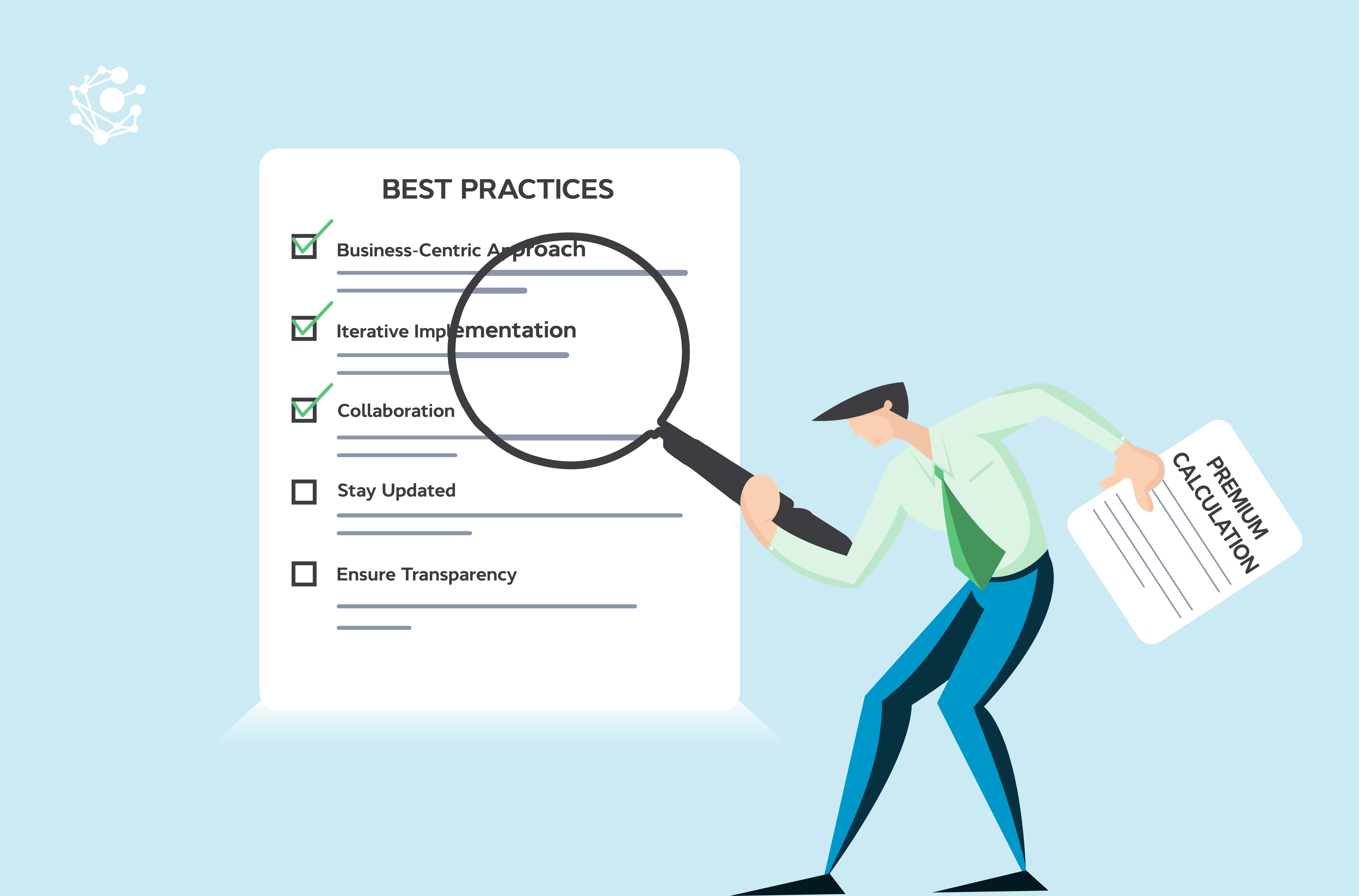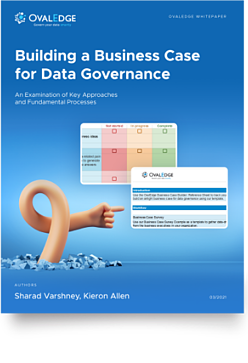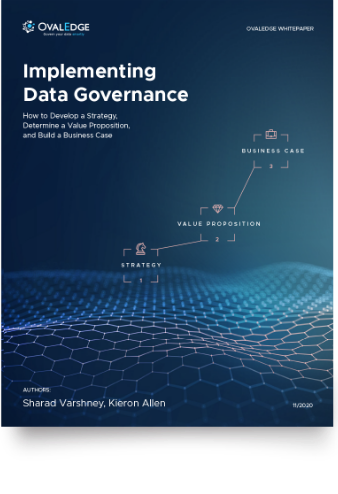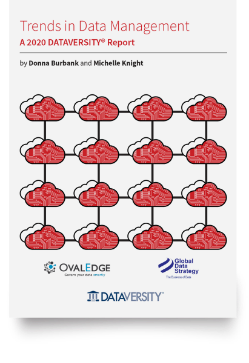Table of Contents

Data Governance in the Insurance Industry
Choosing a company to insure them when the worst-case scenario happens is one of the most important decisions a person can make. The trust customers put in an insurer to support them financially after a road traffic accident, the loss of a loved one, or the fallout from a natural disaster is immense, and insurance companies have a duty to guarantee they operate by the book, to the letter.
While in some sectors, data governance is considered a secondary concern. The insurance industry is different. Data is critical.
It is an industry built on premium calculation. When the data and analysis methods used to calculate risk are flawed, an insurance company will fail and face significant fines. The fact is, an insurance company can't operate unless data governance is in place.
Insurance companies use data governance for many use cases, including regulatory compliance, data quality improvement, and data security, to eliminate data silos, improve analytics, streamline documentation, and cut costs. However, the most essential use case of data governance in the insurance industry is enabling organizations to effectively calculate premiums, which incorporates many of the abovementioned actions.
Accurate premium calculation is not only vital to the success of the insurance company but also an essential prerequisite for regulators. Insurers are under a very fine regulatory lens. Without this oversight, there is a danger that insurers don't have the capital in place to pay claims or charge exuberant premiums that don't reflect the risk.
Related Post:
Ultimate guide to data governance: Expert insights, real-world examples, and more
Why is Data Governance Important in the Insurance Industry?
While data governance is essential in the insurance industry, implementing it can be challenging because there are multiple areas to consider, many of which overlap. The following factors create common obstacles for insurance companies implementing data governance.
To overcome them, insurance companies need to onboard technology solutions and robust data governance frameworks and work to create a data-driven culture in the organization.
Data silos: Insurance companies often operate in silos with data isolated to specific departments, such as claims, underwriting, and sales. This makes consistency difficult and prevents users from acquiring a holistic view of the company's data.
Low data quality: Insurance companies consume data from many sources, such as IoT devices, telematics, social media, and traditional forms. Ensuring data quality across this complex data landscape can be incredibly challenging.
Regulatory compliance: Compliance is a driver for data governance in many sectors. However, regulations are prevalent and strictly enforced in the insurance industry. When data is dispersed and ungoverned, it is challenging to prepare for an audit.
Legacy systems and data integration: Outdated IT systems are often standard in insurance companies. However, integrating legacy systems with newer technologies requires well-structured, available data. Insurers also increasingly rely on third-party integrations for specific information, like weather data.
Data security and privacy: Insurance companies need governance to help avoid the growing threat of data breaches and ensure customer data privacy.
Related Whitepaper: Ensuring Data Privacy Compliance
Data access and availability: Certain departments require specific data to calculate risk and set premiums. Defining who has this access and how to access particular data requires comprehensive governance.
Big Data and advanced analytics: Increased reliance on analytics to calculate risks in the Big Data age makes finding and isolating the required information challenging.
Change management: When any company implements data governance, it needs to consider the cultural changes that will need to happen to make it a success.
Data retention and archival: Data in the insurance industry is often archived as claims can persist over long periods. There must be structures that document how this data is modified and where it is.
How Data Governance Enables Effective Premium Calculation
Regardless of what is being insured, any insurance company's most crucial function is calculating risk. Let's use car insurance as an example. Insurers need to consider various factors such as location, driver's age, previous claims, credit history, the model of the car, and more.
Based on individual premium calculations, a premium is set. When calculating risk, insurance companies need to develop a financial model to determine the risk-based capital they will need to cover any subsequent claims.
These calculations require specific metrics, like consistent definitions. If you miscalculate the rate, the capital requirement might be more or less than it should be.
While every insurance company strives to retain less capital and make more money, they must have sufficient funds to pay claims when approved. There is a delicate balance between calculating the risk and pricing the insurance plans because competition is high.
Optimizing pricing and risk requires key metrics that should follow core data governance principles that ensure all the data is accurate, definitions are correct and standardized, everyone who needs it has proper access, and the process is transparent. That makes data governance a primary use case for insurance companies: if they don't govern their data correctly, they can't operate.
How to Implement Data Governance in the Insurance Industry
You must take a structured approach to implement data governance successfully as an organization operating in the insurance industry. You must set up various frameworks and practices and have a clear implementation roadmap.
Here's a sample step-by-step guide to implementing data governance in the insurance industry:
1. Define your vision and objectives
Establish a clear vision for data governance that aligns with the company's business goals. For example, improving risk assessment, streamlining claim processing, or enhancing customer experience.
You must also determine specific, measurable objectives, like reducing data errors by a certain percentage or ensuring compliance with specific regulations.
2. Establish a governance structure
Create a high-level data governance council comprising representatives from significant departments like underwriting, claims, actuarial, IT, and compliance. This council defines policies, resolves high-level disputes, and provides direction.
You will also need data stewards to take responsibility for data quality, consistency, and lifecycle management in their respective domains.
3. Assess the current state of data in your organization
Conduct a data audit to understand your existing data landscape, including data sources, data silos, legacy systems, and data quality issues. Next, identify regulatory and compliance requirements specific to the insurance industry.
Related Post: Data Governance Maturity Models and How to Measure It?
4. Define policies and procedures
Create data classification, quality, security, access, and retention policies. This might involve defining what constitutes personally identifiable information (PII) or how long claim data should be retained. Beyond this, you must establish data entry, validation, correction, and deletion procedures.
5. Invest in technology
A data governance tool like OvalEdge offers features like cataloging, data lineage, quality metrics, and policy management. The same technology will enable regular data quality checks and validation procedures and provide the functionality to set up automated data cleansing processes to identify and correct errors, inconsistencies, or duplicates.
Other technologies like Master Data Management (MDM) create a single source of truth for crucial data entities. At the same time, Data Loss Prevention (DLP) tools ensure sensitive data is not lost, misused, or accessed without authorization.
6. Enhance data security and privacy
Ensure robust encryption, access controls, and regular security audits, maintain a record of data processing activities, and ensure that data handling practices are transparent to policyholders.
7. Education and training
Provide regular training sessions for employees on the importance of data governance, compliance requirements, and best practices in data management.
8. Monitor, measure, and refine
Use key performance indicators (KPIs) to measure the success of the data governance program. This might include data quality metrics, incident response times, or user compliance with data policies.
You should also regularly review and refine policies, procedures, and structures based on changing business needs, technological advancements, and regulatory updates.
9. Engage and communicate
Engage business users in the data governance process, ensuring they understand their roles and responsibilities. This will require you to regularly communicate the successes and challenges of the data governance program to stakeholders, building trust and ensuring alignment.
Wrap Up
To conclude this article, I want to leave you with a series of best practices. By adopting these best practices and the abovementioned steps, insurance companies can implement a robust data governance program that ensures compliance and enhances decision-making, risk assessment, and overall operational efficiency.
Business-centric approach: Focus on business outcomes. While technology is a crucial enabler, data governance should address business challenges and objectives.
Iterative implementation: Instead of a massive overhaul, consider a phased approach, starting with high-priority areas and expanding gradually.
Collaboration: Foster collaboration between IT and business units, ensuring that data governance is not just an IT-driven initiative.
Stay updated: Given the evolving nature of insurance risks, regulatory environments, and technological advancements, it's essential to stay updated and adapt accordingly.
Ensure transparency: Make policies, procedures, and data metrics transparent and accessible to relevant stakeholders.
What you should do now
|





